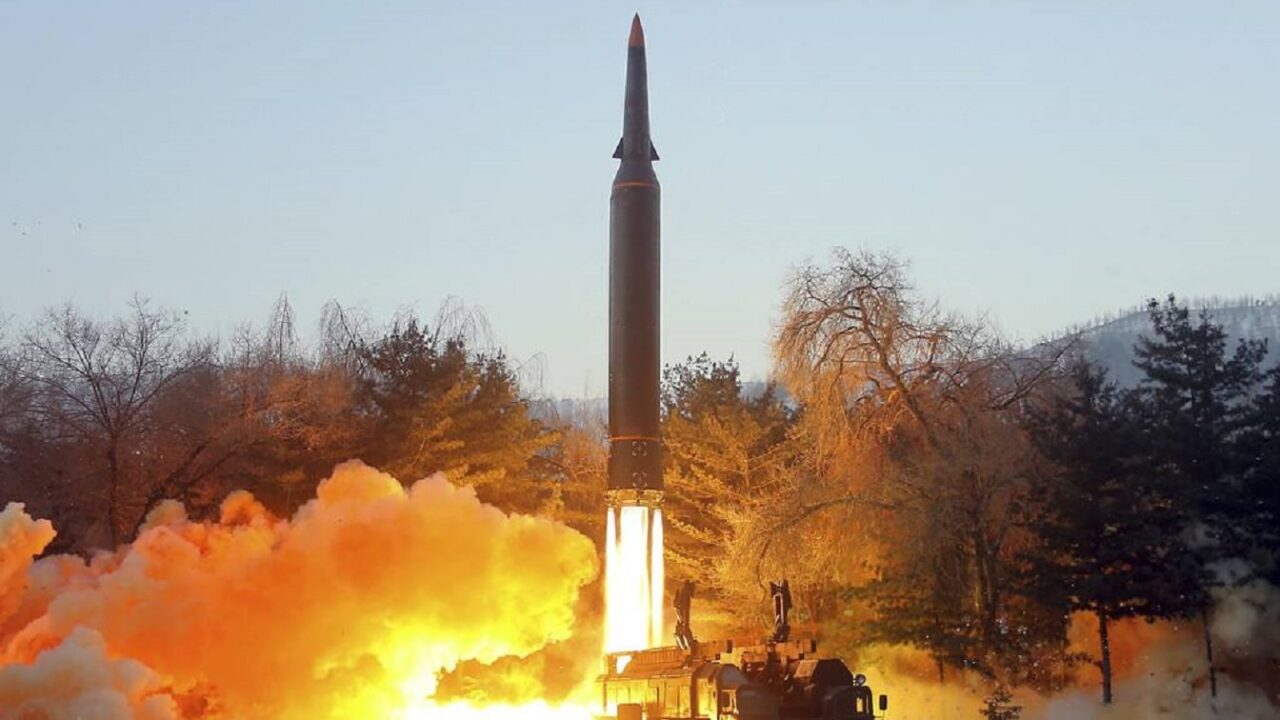Amid an ongoing food shortage and economic crisis, North Korea reportedly test-fired suspected artillery pieces into the ocean on Sunday – a sign that even during a national crisis, the famously isolationist communist country is committed to its campaign of intimidation against South Korea and the West.
In a statement, South Korea’s Joint Chiefs of Staff said that multiple flight trajectories understood to be North Korean artillery was identified on Sunday morning. South Korean officials also said that they were concerned North Korea is currently working to upgrade its weapons systems in a way that poses a threat to the south.
The suspected artillery launches over the weekend are just the latest in a series of weapons tests by North Korea’s military. After test-launching an intercontinental ballistic missile capable of reaching the United States in March this year, U.S. and South Koran officials stated this month that North Korea has almost completed its preparations to conduct its first nuclear weapons test in roughly five years.
Should a new nuclear launch test take place, it would be the seventh overall. The tests, however, do not mean that a nuclear strike is imminent – Pyongyang claims such weapons are for self-defense and deterrence. To even get a working nuclear arsenal, North Korea must develop intercontinental ballistic missiles capable of reliably reaching the United States. Then, North Korean scientists and engineers must develop nuclear warheads that can be mounted to the rockets.
“North Korea is a nuclear weapons state – plain and simple,” explained Harry J. Kazianis, President and CEO of the Rogue States Project and a veteran North Korea watcher, in an interview with 19FortyFive. “Kim knows that in order to have a nuclear weapons arsenal that Washington and Seoul will respect, he will have to test his missiles and nuclear arms. And, of course, that will raise tensions.”
North Korea Maintains Heavy Artillery Systems Along Southern Border
A report from the Rand Corporation in January 2019 found that North Korea’s artillery systems stationed on the country’s southern border with South Korea could kill more than 250,000 people – and that the United States couldn’t do much about it.
Roughly 10 million people in South Korea live within the firing range of the Korean demilitarized zone, including the entirety of the South Korean capital Seoul, as well as tens of thousands of military personnel – including U.S. soldiers – stationed nearby.
The recent artillery tests could indicate that North Korea is working to strengthen its defenses, knowing that the West and the United States remain committed to denuclearizing the country. Dictator Kim Jong Un may also be working to develop his military’s capabilities at a time when Western countries are more focused on the impact of the war in Ukraine.
At present, North Korea already has substantial firepower – even if its nuclear missile tests often end in failure.
U.S. Army General Vincent Brooks, the head of U.S. Forces Korea, said in 2019 that conservative predictions of an attack scenario “anticipate an initial artillery barrage focused on military targets, which would result in significant casualties.”
“A large attack targeting civilians would yield several thousand casualties with the potential to affect millions…within the first 24 hours,” he added.
Jack Buckby is a British author, counter-extremism researcher, and journalist based in New York. Reporting on the U.K., Europe, and the U.S., he works to analyze and understand left-wing and right-wing radicalization, and reports on Western governments’ approaches to the pressing issues of today. His books and research papers explore these themes and propose pragmatic solutions to our increasingly polarized society.

